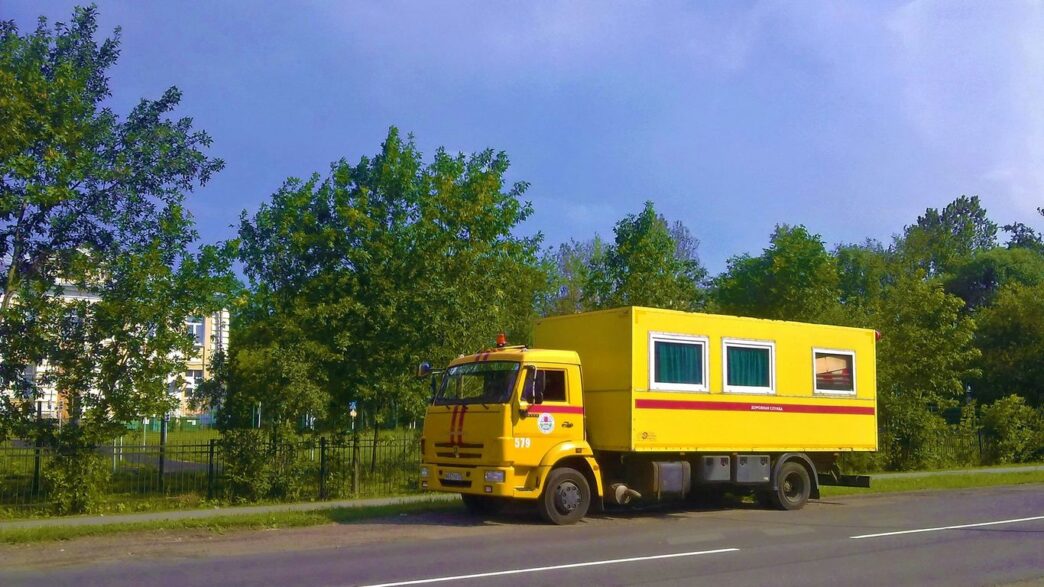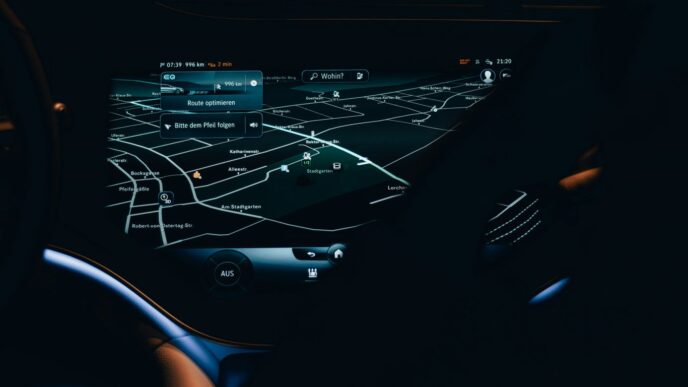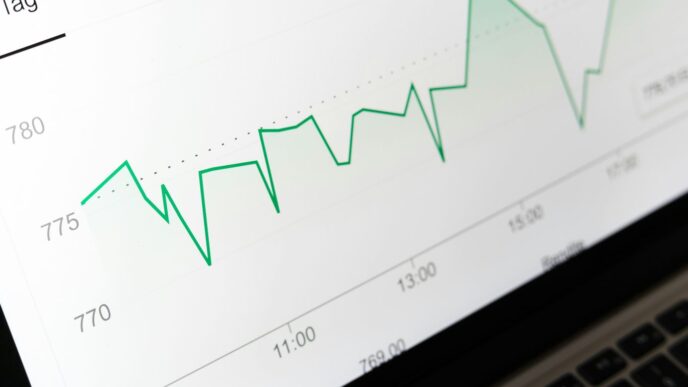Innovative Role of Transport Management Systems UK in Modern Logistics
Transport management systems in the UK are making a big splash in logistics this year, and it isn’t all hype. These platforms have gone from just supporting delivery schedules to being the central nervous system for many supply chains. Businesses are feeling the impact — from fresh produce companies to electronics importers, everyone is starting to see the benefits. Everything’s moving faster, orders are more accurate, and there’s less stress over what’s happening out on the road. Here’s a closer look at the three standout ways these systems are changing the game.
Enabling Real-Time Visibility Across Supply Chains
Getting a clear picture of shipments in real time used to feel almost impossible, but now it’s the norm. TMS platforms automatically update the status of every order and vehicle. If there’s a delay at Dover or a shipment is taking a different route, operations managers see it instantly. Here’s what’s changing:
- Automated milestone tracking (departures, arrivals, unloading, customs)
- Live alerts for delays or issues (think road closures, bad weather, or port holdups)
- Stock and location data updated while the truck’s still rolling
The instant updates help companies prepare for disruptions and keep customers in the loop, reducing stress across the board.
Transforming Freight Planning and Route Optimization
Paper maps and guesswork have been kicked to the curb. Now, TMS platforms use smart software to build the most efficient transport routes — in some cases, with input from technologies like robotics and cloud analytics (transportation innovation). Here’s how this shift is helping operators:
- Orders are grouped for the quickest delivery runs.
- Fuel costs drop as trucks use less congested roads.
- Empty miles (the bane of logistics) are avoided when backhauls are lined up.
| Benefit | Before TMS | With TMS |
|---|---|---|
| Route Planning Time | 2-3 hours | 15 minutes |
| Missed Deliveries/Month | 15–20 | 3–7 |
| Fuel Efficiency | 7 mpg | 9+ mpg |
This isn’t just about cost — it stops drivers from burning out and improves reliability for customers.
Enhancing Communication With Stakeholders
Phone tag and lost emails? Not so much anymore. TMS tools work as messaging hubs so everyone — suppliers, drivers, warehouse folks, customers — stays on the same page. Many systems now:
- Share key shipment updates automatically with partners
- Centralize communication logs for easier issue tracking
- Offer direct chat features between teams
People don’t have to wait all day for answers or wade through a hundred email threads. Problems get sorted, and work keeps moving. In short, these changes are pushing the UK’s logistics industry ahead of the curve, and it’ll be interesting to see how much further they can go as adoption grows.
Sustainability Initiatives Driven by Transport Management Systems UK

Transport Management Systems (TMS) in the UK are making a real difference in how logistics companies approach sustainability in 2025. These solutions are right at the heart of cutting back carbon emissions and rethinking how fleets and resources get used. Companies are under pressure from customers and government regulations to move faster towards greener operations. TMS helps them find practical solutions instead of just talking about it. Let’s get into some of the ways this is playing out day-to-day.
Decarbonization and Adoption of Green Transport
One major change is the focus on decarbonization. UK-based logistics now use TMS to roll out and track efforts, including:
- Switching diesel vehicles for electric vans and trucks, or even a few hydrogen models in some fleets.
- Using TMS dashboards that show carbon footprints per delivery, so companies quickly spot where they need to improve.
- Trip planning systems that prioritize low-emission routes and vehicles.
Here’s a simple table summarizing how fleets have changed:
| Year | % of Electric/Hybrid Vehicles | Average Fleet CO₂ Emissions (kg/km) |
|---|---|---|
| 2023 | 22% | 0.77 |
| 2025 | 47% | 0.39 |
That cut in emissions is pretty dramatic, and it would be tough to manage without integrated TMS reporting and planning functions.
Optimizing Fleet Utilization for Lower Emissions
Optimizing fleet use once meant squeezing more jobs into the same trucks. Now, TMS logic helps reduce empty runs and matches loads better. Common adjustments include:
- Mixing and matching loads from different shippers going to similar places.
- Timing deliveries to avoid traffic jams that result in more idling and emissions.
- Cut out deadhead miles by planning circular or multi-stop routes.
Results aren’t limited to emissions—companies are also saving on fuel, driver hours, and vehicle wear. Everyone wins.
Supporting the Circular Economy Through Reverse Logistics
The rise of the circular economy has put reverse logistics on the map. TMS plays an unexpected but big part in making this work by:
- Scheduling returns or pickups alongside regular deliveries (so fewer extra trips).
- Tracking used goods, parts, or packaging through the system to either recycling or refurbishment spots.
- Managing data so companies can report not just what goes out, but what comes back for reuse.
Some companies are even using TMS platforms to coordinate sharing fleet space with partners for reverse supply runs. It’s awkward at first—lots of back and forth between different companies, but TMS makes the tracking and paperwork manageable.
So, while a lot of the hype is about futuristic tech, these TMS-led sustainability efforts are already changing how business is done day-to-day—and helping companies hit climate targets without breaking the bank.
Artificial Intelligence and Automation Advancements in UK Logistics
Logistics in the UK is changing so quickly, and honestly, a huge part of that is because of artificial intelligence and automation. Businesses are turning to these technologies to cut costs, work faster, and make fewer mistakes. In 2025, it’s not just the big names—almost everyone in the industry is chasing these upgrades now. Let’s break down how AI and automation are shaking things up.
AI-Powered Demand Forecasting and Predictive Analytics
Predictive analytics have become the backbone of smarter logistics planning. It helps companies know what’s coming next and prepare for it. Here’s how it’s impacting the field:
- Companies can now predict demand spikes and slow periods with much greater accuracy, using weather reports, social trends, and buying habits.
- Inventory waste is dropping because the system orders only what’s needed—no guessing.
- Delivery windows are much tighter, which means fewer customers waiting around.
- In real numbers, studies show AI can improve forecasting accuracy by 30% and cut logistics costs by around 15%.
| Aspect | Before AI | With AI |
|---|---|---|
| Forecast Accuracy | ~60-70% | ~90% |
| Inventory Cost Reduction | Low | 15-35% |
| Order Fulfillment Speed | Slower | 25-40% faster |
Smart Warehousing With Robotics and Automation
Warehouses used to depend a lot on human labor, but now robots and automated systems are common. Here’s what’s changing:
- Robots can move goods 24/7 without breaks, reducing picking errors by nearly 100%.
- These systems create more space because they store items more efficiently.
- Human workers are now freed up to work on jobs that need judgment or problem-solving, not just lifting boxes.
In the UK, companies are avoiding common management pitfalls from the past by constantly reviewing warehouse tech and making changes as needed.
Key improvements from smart warehousing:
- Faster order processing (sometimes by 40% or more)
- Lower fulfillment costs
- Almost zero lost inventory
Machine Learning for Dynamic Order Management
Machine learning is a type of AI that learns from new data and adapts in real time. In logistics, this means orders are managed on the fly, without human help. This tech:
- Matches trucks, drivers, and packages in real time, reacting instantly to traffic or weather problems.
- Suggests the most efficient delivery route every time, not just based on a fixed plan.
- Handles peak times or last-minute changes naturally.
What this really means is fewer late shipments and less idle time for vehicles and workers. Companies using this approach are finding they keep their customers happier and avoid costly disruptions.
The logistics sector is shifting from old-fashioned guesswork to highly responsive systems—AI and automation are making all the difference in the UK’s logistics landscape for 2025.
Emerging Technologies Shaping Transport Management Systems UK

Transport management in the UK isn’t just ticking along; it’s taking huge steps thanks to new technology. There’s a real buzz around the ways computing, automation, and smarter tools are getting built right into logistics. It’s not just pie-in-the-sky stuff either—some of these ideas are out there on the road or in warehouses right now, quietly changing how we get things from A to B.
Quantum Computing in Complex Route Allocation
Trying to sort through endless delivery options, traffic data, and fuel costs by hand isn’t just tricky—it’s pretty much impossible. Quantum computing could overhaul route allocation by crunching huge data sets in seconds, making what’s complicated today look simple tomorrow. Here’s how it’s being put to work:
- Simulates millions of delivery path combinations at once
- Accounts for weather, roadwork, and vehicle performance in real time
- Gives dispatchers near-instant answers to tough routing questions
It’s still early days, but quantum power is growing. In fact, human-like robots and no-touch systems are already pushing the boundaries in other areas, showing how tech previously only seen in sci-fi is set to become practical for supply chains, too.
Augmented Reality in Warehouse Operations
Augmented reality (AR) isn’t all about games or social filters. In warehouses, AR headsets and apps:
- Help workers locate products with overlay directions
- Cut down on picking errors by highlighting the right items
- Give hands-free access to order lists and inventory info
Take a worker picking orders—with AR, instead of juggling a tablet or paper, they see digital notes floating right in their field of vision. That’s less time walking, fewer mistakes, and, honestly, a job that feels a bit more future-proof.
Natural Language Processing for Streamlined System Interaction
Natural Language Processing (NLP) is making logistics software easier for teams to use—no advanced tech knowledge needed. With NLP-powered transport systems, you can:
- Ask for delivery status or updates in plain language
- Set schedules or reroute vehicles by talking, not typing code
- Generate reports just by saying what you need—no digging through menus
For small and large teams alike, this means less training, faster onboarding, and fewer mistakes.
| Technology | Main Benefit | Example Use |
|---|---|---|
| Quantum Computing | Speed + smarter routing | Delivery route plans |
| Augmented Reality | Hands-free efficiency | Warehouse order pick |
| Natural Language Processing | Easier system commands | Voice status updates |
It’s not hype—these technologies are rolling out faster than ever. As they get picked up across the UK, they’re setting new standards and making old frustrations in logistics a thing of the past.
Digital Transformation and Integration of Connected Logistics
The logistics world in the UK has seen faster change than ever before, and connected systems are at the heart of it. Companies are moving away from scattered spreadsheets and paperwork. Instead, they’re connecting trucks, warehouses, and inventory systems through powerful digital tools. This digital transformation has made logistics much quicker, clearer, and more adaptable. It all comes down to connecting every piece of the supply chain so they can talk to each other in real time.
IoT and Cloud-Driven Asset Tracking
IoT (Internet of Things) sensors are being stuck on just about anything that moves—vans, shipping containers, pallets, even racks in the warehouse. These sensors track location, temperature, and sometimes even shock or tilt. The data gets sent straight to the cloud, where logistics managers can pull up the details any time.
Here are a few ways this plays out on the ground:
- Loss and theft are easier to spot and respond to.
- Asset condition is monitored constantly, so fragile goods stay safe.
- Drivers get route updates instantly if issues pop up.
A quick breakdown:
| Asset Type | % Tracked by IoT (2025) | Avg. Delay Reduction |
|---|---|---|
| Delivery Trucks | 82% | 43 minutes |
| Pallets & Bins | 67% | 28 minutes |
| Warehouse Racks | 41% | 19 minutes |
End-to-End Supply Chain Integration
Old logistics systems used to act like isolated islands. Today, companies are tying everything together. The ordering system, procurement, transport, warehouses, and last-mile delivery are all synced.
Some real-world results from this approach:
- Fewer errors, since all steps use the same data.
- Quicker reaction times if a delay or disruption crops up.
- Less manual work—no more retyping orders or confirming deliveries one by one.
- Full visibility for customers from start to finish.
Real-Time Data for Proactive Logistics Decision Making
It’s one thing having mountains of data. It’s another thing to actually use it in the moment. With real-time traffic, weather, inventory, and order updates, UK logistics teams can make decisions on the fly instead of waiting for daily or weekly reports. Sometimes this means rerouting a truck during a sudden storm, or shifting warehouse staff to avoid a bottleneck.
Benefits include:
- Spotting problems before they become disasters
- Making smarter, faster choices about stock levels and staffing
- Giving customers accurate delivery info, right up to the doorstep
So, in 2025, this tight web of connected tech is taking logistics from old-fashioned guesswork to clear, quick-flowing operations. Mistakes and surprises are way down, and businesses can keep their promises even when things change fast.
Boosting Supply Chain Resilience Using Transport Management Systems UK
Resilience isn’t just a fancy word in logistics circles anymore—companies have learned (the hard way) that their ability to bounce back from disruption can be the difference between meeting customer promises and scrambling to explain delays. Transport Management Systems (TMS) in the UK are the backbone helping logistics firms stay flexible and keep supply chains moving, even when the unexpected hits.
Adapting to Market Fluctuations and Disruptions
When shipping problems or market shifts crop up, UK firms lean on TMS for speed and clarity. These systems,
- Alert teams as soon as unexpected disruptions happen (think: port strikes, weather issues, or sudden demand surges)
- Provide alternative route suggestions in seconds, not days
- Let planners compare costs and transit times quickly to avoid costly mistakes
A recent trend is for companies to mix real-time TMS data with crowd-sourced delivery networks. For example, startups like shared-economy platforms for delivery have helped fill gaps during driver shortages, getting goods where they’re needed while keeping costs steady.
Risk Mitigation Through Predictive Insights
Nobody likes risk, but ignoring it only makes things worse. Modern TMS taps into AI and machine learning to spot trouble before it grows. Here’s how:
- Tools score vendors and routes by reliability, allowing teams to switch partners before issues become major headaches
- Automated alerts warn of bottlenecks (like congested ports or hazardous weather)
- Dynamic modeling helps predict the impact of shortages, letting you line up backup suppliers
Check out this simplified example of how TMS reduces the impact from disruptions:
| Scenario | No TMS Response | With TMS Response |
|---|---|---|
| Port Strike | Delays up to 10 days | Shipment rerouted, 2-day delay |
| Traffic Disruption | Missed delivery | Alternate route, on-time |
| Supplier Shortage | Lost orders | Backup supplier triggered |
Maintaining Customer Service During Volatile Periods
High expectations don’t pause for problems. With TMS, logistics teams in the UK can:
- Keep customers in the loop through real-time delivery updates
- Offer flexible delivery options and rerouting if issues arise
- Adjust fulfillment promises based on live transport availability
The end result? Even in tough times, customers get their orders (mostly) on time—and if there is a delay, at least they know what’s happening, which goes a long way towards trust and repeat business. Supply chain resilience isn’t just about bouncing back, it’s about not letting things fall apart in the first place.
Enhancing Customer Experience With Next-Generation Transport Management Systems UK
Personalized Delivery Options and Green Fulfillment
These days, people want their parcels to arrive when—and how—they want. Next-generation Transport Management Systems (TMS) in the UK step up by letting customers choose from flexible delivery times, locations, and even eco-friendly shipping methods. Consumers increasingly pick delivery slots that match their schedules and opt into greener choices, like electric vehicle delivery for small parcels.
Benefits customers see:
- Multiple delivery window choices (morning, evening, weekend)
- Green shipping options, such as bike couriers or EV vans
- Simple interface to change delivery preferences last minute
This mix of options fits well with the rise in consumer demand for quick, custom choices—whether ordering groceries or electronics.
Real-Time Customer Updates and Transparency
With TMS technology, customers don’t have to guess where their order is. They get updates in real time, giving them peace of mind and fewer surprises. Here’s what’s changed:
| Feature | Before TMS Revolution | With Next-Gen TMS |
|---|---|---|
| Shipment Visibility | Limited | Real-time GPS |
| Estimated Arrival Notice | Day of delivery only | Live ETA updates |
| Exception Alerts | Manual calls/emails | Automatic push/text |
Having visibility over every stage of the journey, from warehouse to doorstep, means customers aren’t left in the dark. Sometimes things happen—bad weather, traffic, whatever. TMS alerts customers quickly and keeps trust intact even if things go sideways.
Streamlining Last-Mile Delivery Services
Last-mile delivery is the stickiest part—urban traffic, last-minute changes, and people not being home. But new TMS platforms use smart routing, real-time updates, and live tracking for drivers and recipients.
Why this matters:
- Dynamic route changes help drivers avoid traffic jams
- Couriers can group deliveries for nearby addresses, speeding things up
- Customers can reroute or reschedule on the fly via app or SMS
Sometimes, old systems would leave people waiting all day or dealing with failed attempts. New TMS fixes a lot of that, making the final leg of delivery a better experience—for the folks receiving parcels and the ones dropping them off.
In 2025, it’s clear that these improvements haven’t just made things quicker but have set new standards for what customers expect from shipping. If you’ve ordered anything online lately, you’ve probably already seen the difference.
Conclusion
So, looking at everything happening in UK logistics right now, it’s clear that transport management systems are making a real difference. Companies are using smarter tools to keep up with new rules, customer needs, and the push for greener ways of working. It’s not just about fancy tech—these systems are helping people get things done faster, with fewer mistakes, and with less waste. As we head deeper into 2025, it feels like the companies that keep adapting and trying out new ideas will be the ones that stay ahead. Logistics isn’t standing still, and neither are the folks running it. If you’re in the business, now’s the time to get on board with these changes, because the future is already rolling in.














